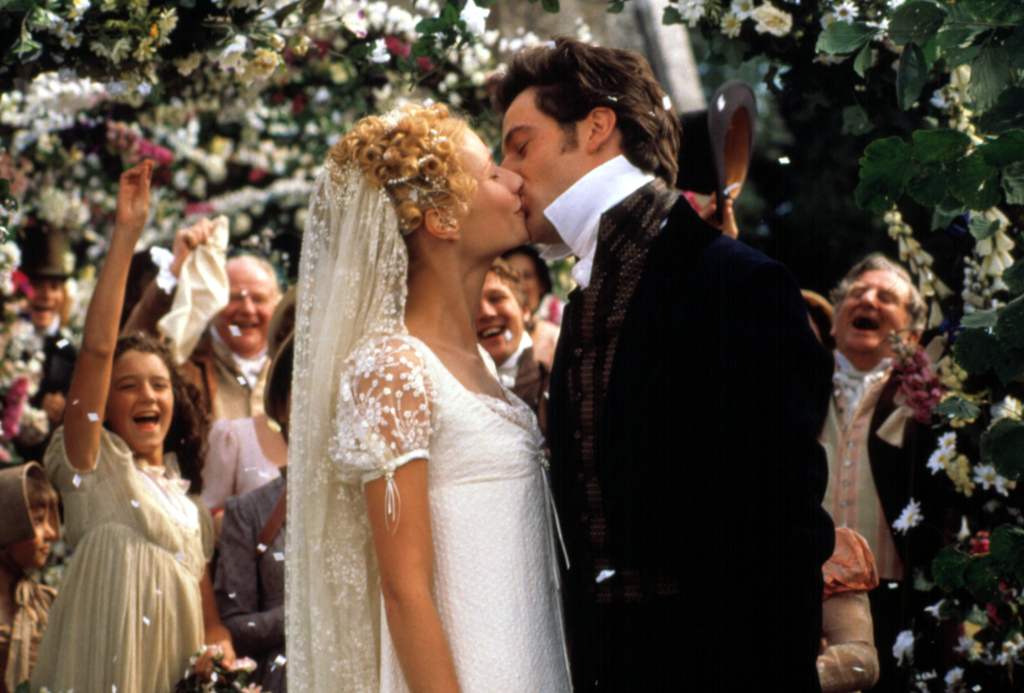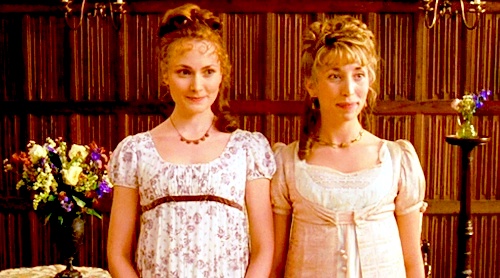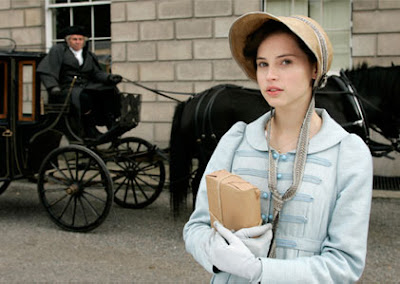Growing Older with Jane Austen by Maggie Lane: Review and Highlights by Brenda S. Cox
“A woman of seven and twenty,” said Marianne, after pausing a moment, “can never hope to feel or inspire affection again”—Sense and Sensibility, chapter 8.
“Without thinking highly either of men or matrimony, marriage had always been her [Charlotte Lucas’s] object; it was the only provision for well-educated young women of small fortune, and however uncertain of giving happiness, must be their pleasantest preservative from want. This preservative she had now obtained; and at the age of twenty-seven, without having ever been handsome, she felt all the good luck of it”—Pride and Prejudice, chapter 22.
“Anne, at seven-and-twenty, thought very differently from what she had been made to think at nineteen”—Persuasion, chapter 4.
Marianne Dashwood expresses the views of popular literature of the time when she says that a 27-year-old woman is too old for love. In Pride and Prejudice, Charlotte Lucas is desperate at age 27, and accepts Mr. Collins. But in Persuasion, Austen overturns the conventions by showing us a mature, 27-year-old woman who does find love, though her society would say she’s over the hill.
All Jane Austen’s other heroines are younger, between 16 (Marianne Dashwood) and 22 (Jane Bennet, and Charlotte Heywood of Sanditon). The heroes are somewhat older, from their early twenties to mid-thirties, with Mr. Knightley the oldest at 37 or 38. These ages are probably standard fare for books including a marriage plot (though Austen of course offers other themes as well).
However, many older characters in Austen’s novels influence those young people’s lives. We can learn a lot about aging in Austen’s world from her novels.
I’m glad that some years ago I got a copy of Maggie Lane’s Growing Older with Jane Austen. I learn new things from it each time I re-read it. I’ll tell you up front, though, that currently there are only some overpriced used copies available online, though I hope you might be able to borrow a copy through your library. (I’d love to see this classic reissued, at least as an ebook!)
So, I want to share with you just a few of Maggie Lane’s insights into aging in Jane Austen. It’s hard to choose from such riches; I wish I could cover the whole book. Lane explores the topic of aging through Austen’s novels, other writings, and letters, as well as Austen’s own life and her family’s lives. I’ll give you some tastes of the first half of the book this month, and the second half next month.
Introduction
Jane Austen was aware of the challenges of growing older. Lane starts with several of Austen’s comments that show compassion for older people and awareness that she herself was aging. For example, Austen wrote of her elderly acquaintance, “poor Mrs. Stent”: “we must be merciful, for perhaps in time we may come to be Mrs. Stents ourselves, unequal to anything & unwelcome to everybody” (Letters, April 21, 1805).
Austen herself, Lane says, “was more contented, busy and fulfilled at thirty-eight than at twenty-nine. . . . She had less than four years left to live, but what she accomplished in her brief lifespan would bring pleasure to readers across continents and for centuries to come . . .” (9).
The Loss of Youth and Beauty (chapter 1)
Beauty was crucially important to young women of Austen’s time because it enabled them to find husbands, along with security and income.
Two Austen heroines, Marianne Dashwood and Anne Elliot, lose their “bloom.” Lane defines that as “a healthy, glowing skin free from blemishes and wrinkles.” Health was fragile in this day of “little medical undertanding or treatment.” A woman’s “bloom” could be lost through suffering or sickness, as happened to Marianne and Anne (as well as to Eliza Williams, offstage in Sense and Sensibility). The loss of bloom and beauty materially damaged a woman’s chances of getting a husband and a home of her own. However, both Marianne and Anne are restored by the love of those around them (Lane, 14-17).
One conduct book of the time, The Mirror of Graces, suggests that at age 30, a woman lays aside youthfulness, and “arrays herself in the majesty of sobriety, or in the grandeur of simple magnificence.” By the time she is 50, she should “gracefully” throw aside ornamentation and descend into old age (Lane, 20). Elizabeth Elliot is approaching the “dangerous” age of 30. Mrs. Weston of Emma must be in her late thirties, though Frank Churchill describes her as a “pretty young woman.”
Several role models in the novel are older women like Mrs. Weston, whose “sense of self-worth is not dependent on her appearance, or on male reaction to it” (Lane, 25). Mrs. Croft and Lady Russell are likewise secure in their age and appearance. It is a man, Sir Walter Elliott, age 54, who is most concerned about age and most vain of his looks!
My Time of Life (chapter 2)
“Age plays a large part in how we perceive ourselves and others, even today,” Lane says (38). Austen gives us full pictures of her characters, appropriate for the “time of life” of each one. “With the lightest of touches, Jane Austen grounds her characters in the age range they inhabit. Small details of clothes, hair or deportment, or more frequently and consistently of speech, outlook and habit, help us perceive her old characters to be middle-aged or elderly” (Lane, 41). Mr. Woodhouse, though, shows himself to be “older in ways than in years.” His fears, hatred of change, love of youthful habits and furnishings, and his speech all show him as a unique but elderly person. Mrs. Jennings and Mrs. Bates also speak and reminisce in ways that show their age.
For Austen, youth is not enough. Mrs. Bennet, for instance, had “youth and beauty” enough to capture a husband, but not the depth of character needed for aging well. Austen uses the phrases “the evening of life,” in Emma, and “November of life,” in Persuasion. “In both instances, what is shown is an awareness of passing time, and acknowledgment that to live a satisfying full lifespan, the charm and freshness of youth need to be supplemented and then succeeded by something deeper” (Lane, 39).

C. E. Brock, public domain
Parent Against Child (chapter 3)
Most of the older people in Austen’s novels are parents. The parents of marriageable daughters would likely have been in their early forties, though the movies often show them much older.
Lane explores the tensions between the generations in Austen’s novels: Edward Ferrars against his mother, Tom Bertram against his father, William Elliot against the head of his family, Henry Tilney against his father, even Colonel Brandon against his own father before S&S starts.
Parents were no longer arranging marriages for their children. “In the eighteenth century, it was increasingly believed that the way to promote fidelity in marriage was to allow couples to follow their hearts, rather than forcing them into the dynastic arranements of the past.” Couples, however, still had to get parental approval, as we see in Austen’s novels. The Morlands, for example, will not countenance Catherine’s marriage to Henry until General Tilney gives his “appearance of consent” (Lane, 57).
Propriety dictated that the younger generation defer to the older generation, and Austen criticizes those who are disrespectful. Anne Elliot, despite her father’s selfishness and foolishness, always treats him respectfully. (I would add, this was a religious duty, to honor one’s parents.) Emma is rebuked most strongly, and repents most deeply, when she makes fun of an older woman, Miss Bates.
Lane goes on to explore “the joy of grandchildren” and “the importance of aunts” in the novels. Elizabeth Bennet’s aunt, Mrs. Gardiner, provides “a model of how an aunt/niece relationship, or indeed any relationship between the generations, should be” (Lane, 71).
Old Wives (chapter 4)
Along with other family relationships, Austen illustrates a whole range of marriages. From the ill-matched Bennets to the well-matched Gardiners and Crofts, Austen “shows us every kind of marriage” so her heroines can learn what to imitate and what to avoid.
Lane discusses “old wives,” meaning women “who had been married long enough to come to some accommodation with the choices they had made in youth and to live with whatever idiosyncrasies they may have discovered in their husbands” (Lane, 72). Some are happy, some are not, mostly depending on their own attitudes.
One of Mrs. Bennet’s worst characteristics is self-pity, “a severe failing in Austen’s estimation, because it is something that could and should be remedied” (Lane, 73). In contrast, Charlotte Collins and Mrs. Grant make the best of their situations with less-than-ideal husbands, and enjoy their lives. Mrs. Price (Fanny’s mother) and Mary Musgrove, however, complain and grumble about the choices they have made.
Clergymen’s wives had an important place in the community, as we see with Mrs. Elton. But their positions were also precarious. The husband’s death meant a loss of home and income, as happened to poor Mrs. Bates. Jane herself, with her mother and sister, suffered the loss of most of their income when Jane’s clergyman father died.

C.E. Brock, public domain
Old Maids (chapter 5)
The alternative to marriage, a single life, involved being a potentially despised “old maid.” In Austen’s own family, there were several late marriages which rescued an older woman from that fate. Austen also had some friends who were older, impoverished, single women.
In Emma, Emma discusses old maids. Harriet is shocked that Emma does not plan to marry, because being “an old maid at last” is “so dreadful.” Emma disagrees, saying, “a single woman of good fortune is always respectable, and may be as sensible and pleasant as anybody else!” But, she adds, “a single woman with a very narrow income must be a ridiculous, disagreeable old maid! The proper sport of boys and girls” (Lane, 96). This, of course, reflects Emma’s prejudices. Miss Bates, poor and foolish, is the quintessential example of an old maid in Austen’s novels. In contrast, Emma also includes three respectable single teachers and two governesses. (Though Jane Fairfax is only expected to be a governess, which she compares to slavery.) These were the alternatives for women who did not marry.
*****
In later chapters, which we’ll look at next month, Lane discusses aging men, widows and dowagers, age and money, and illness and death. In the meantime, I’ve listed some online sources you might want to explore.
Let’s discuss in the comments section:
Who is your favorite older character (let’s say over 35; lifetimes were shorter then) in Austen’s novels? Who is your least favorite older character? Why? Do they show you anything particular about aging in Austen’s England?
Here are some to choose from (age estimates with a ? are my own guesses):
P&P: Mrs. Bennet (probably between 41-48?), Mr. Bennet (?), Mrs. Gardiner (“several years younger than Mrs. Bennet and Mrs. Phillips”), Mr. Gardiner (?), Lady Catherine de Bourgh (perhaps in her late 40s or early 50s?, as she has a daughter around Darcy’s age of 28)
Persuasion: Mrs. Croft (38), Admiral Croft (40s or 50s?), Sir Walter Elliot (54), Lady Russell (50s?)
S&S: Mrs. Dashwood (40), Mrs. Jennings (late 40s, probably?; her eldest daughter Lady Middleton is 26 or 27), Sir John Middleton (about 40)
Mansfield Park: Dr. Grant (45), Mrs. Grant (?), Mrs. Rushworth (40s?), Sir Thomas Bertram (50s?), Lady Bertram (about 50?; married 30 years ago)
Emma: Mr. Weston (40s), Mrs. Weston (late 30s?), Mr. Woodhouse (50s or 60s, perhaps? He “had not married early,” but has a 20-year-old daughter), Mrs. Bates (“very old”), Miss Bates (“middle of life”)
Northanger Abbey: General Tilney (“past the bloom, but not past the vigour of life”), Mr. Allen (older, has gout), Mrs. Allen (was at school with Isabella’s mother, Isabella is 22, perhaps the mothers are in their 40s)
Lady Denham of Sanditon (70), Lady Osborne of The Watsons (49)
You can no doubt add others!
For more on the topic of aging women in Jane Austen’s novels, see:
Growing Older with Jane Austen, Part 2
“’My Poor Nerves’: Women of a Certain Age on the Page,” about perimenopausal women in Austen
“Past the Bloom: Aging and Beauty in the Novels of Jane Austen,” by Stephanie M. Eddleman, a fascinating article
“Three Stages of Aging with Pride and Prejudice,” by Emily Willingham, a light look at how we identify with different characters as we have more life experience
And, of course, the source for most of the above:
Growing Older with Jane Austen, by Maggie Lane
Brenda S. Cox writes about Faith, Science, Joy, and Jane Austen. Her recent book is Fashionable Goodness: Christianity in Jane Austen’s England.
This June she will be speaking at Regency Week in Alton, England, and would love to see some of you there!






















